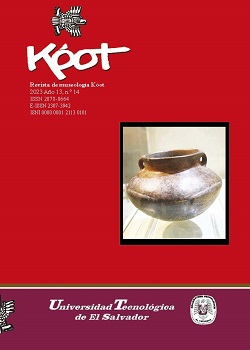Some considerations on the construction of the Nicaraguan national identity in the XIX century
Published 2023 - 01 -01
Keywords
- Pop culture – Nicaragua – XIX century,
- Sociology – Nicaragua,
- Nicaragua – civilization – XIX century,
- National identity,
- Nationalism
- Nicaragua – politics and government – XIX century,
- Nicaragua – history,
- Cultural anthropology – Nicaragua ...More
Copyright (c) 2023 Universidad Tecnológica de El Salvador

This work is licensed under a Creative Commons Attribution-NonCommercial-ShareAlike 4.0 International License.
How to Cite
Abstract
The Nicaraguan press during the XIXth century demonstrated the confused and contradictory of the project of nation of the Nicaraguan intelligentsia, a part from her was defending an identity and Central American patrimony, while other one was supporting a concept of national identity tied about the soil where one was born, that is to say of Nicaragua. A few texts were supporting a concept of ethnic - cultural inferiority and were devaluating the project of nation tied to the interoceanic channel. Nevertheless, in 1874 the interest becomes more well[1]known of creating a patriotic feeling tied to the place of birth. The Guía Ilustrada del Estado de Nicaragua of 1898 contributed to the formation of the national identity as for which he presents the Nicaraguan as a being for the most part half-caste, and it indicates the ethnic - cultural characteristics of the Nicaraguan as a defending people of the political, simple and hospitable order. Such features stem from the awarded ones to the national hero Jose Dolores Estrada.
Key words: Pop culture – Nicaragua – XIX century, Sociology – Nicaragua, Nicaragua – civilization – XIX century, National identity, Nationalism, Nicaragua – politics and government – XIX century, Nicaragua – history, Cultural anthropology – Nicaragua
